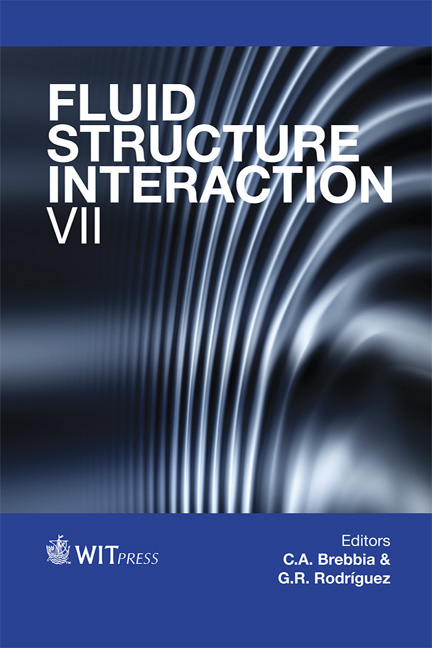Assessment Of Flutter Speed On Long Span Bridges
Price
Free (open access)
Transaction
Volume
129
Pages
12
Page Range
61 - 72
Published
2013
Size
1,105 kb
Paper DOI
10.2495/FSI130061
Copyright
WIT Press
Author(s)
M. Papinutti, J. Kramer Stajnko, R. Jecl, A. Štrukelj, M. Zadravec & J. Á. Jurado
Abstract
In this paper it is shown how to calculate flutter speed on the example of the Great Belt East Bridge in Denmark. Two numerical approaches are shown for prediction of the aeroelastic phenomena on bridges. In the computational fluid dynamics (CFD) simulation turbulence model based on Reynolds Average Navies Stokes (RANS) approach, two-equation shear stress turbulence (SST) models were chosen. Although the SST model needs more computer resources compared to the k-ω and k-ε models, it is still affordable with multi-processing personal computers. In this paper extracted flutter derivatives in the force vibration procedure are shown. Flutter derivatives are later used in the hybrid method of flutter. Final flutter speed was calculated based on flutter derivatives from fluid structure interaction extraction and experimental extraction. Flutter velocity was also determined with a free vibration of deck at the middle of the bridge. The deck section of unit length was clamped into springs and dampers. Flutter speed was reached with time increasing of wind speed until large oscillations occurred. The general procedure of how to formulate the fluid structure interaction and necessary stapes for flutter analysis of the bridge is shown in this paper. Numerically extracted flutter derivatives are compared based on the final flutter speed to experimental measurements of the deck section. Keywords: bridge aeroelasticity, long span bridge, flutter derivatives, numerical simulation, fluid structure interaction, computational fluid dynamics.
Keywords
bridge aeroelasticity, long span bridge, flutter derivatives, numerical simulation, fluid structure interaction, computational fluid dynamics.





